E3 is now over, the weekend has passed, the attendees have flown back to their homes, and it is time for me to go over the media coverage of the events, as is now traditional. If you are new to them, I invite you to first check on the methodology that we use, and then to have a read of last year’s analysis.
Platforms
We now have 3 years’ worth of data to compare, and this constitutes a relatively easy-to-read snapshot of the event, and one that sets the tone for how well the event did, from a media coverage perspective:
This is the 2nd year where Nintendo as a brand is declining in the media coverage during E3. The lack of any hardware announcement where both Sony and Microsoft made one, and the format of their announcement that focuses on the online audience rather than to the in-person press conferences of its competitors means that the firm is losing out on mindshare with the media during the E3 week.
On the Sony front, 2015 saw a slight dip, but this year has seen the most mentions of any console brand across an E3 week since we began our tracking. This is on the back of the teasing of the PS4 Neo, and a release date and price for Playstation VR. It is also the press conference that had the highest proportion of new games announced:
Here is a quick and dirty analysis of each press event type of announcements (for games). pic.twitter.com/YXBGoctQe8
— Thomas Bidaux ⚔ (@icotom) June 14, 2016
For Microsoft, this also proved to be an excellent E3, as for the 2nd year media mentions of their console brand has increased, taking it to the level Playstation had in 2014. The double announcements of the Xbox One S and the Project Scorpio with its promise of VR support were the strongest take-aways from their press conference.
Again this year, the PS4 and the Xbox One are the two leading platforms in terms of media coverage. Interestingly, the Wii platforms and the 3DS have both declined significantly, the former more drastically so than the latter. A lot of this can be also be attributed by the significantly smaller support from 3rd party for the Nintendo devices, that rely on its own games for the majority of coverage.
Looking at the reach (details on the method at the end of the blog post), the gap between the Playstation 4 and the Xbox One is a lot narrower. The generally higher profile of media covering the Xbox new devices is probably helping.
Another interesting difference is how good the Oculus Rift’s reach is compared to the number of articles. There seems to be a strong interest in VR devices from bigger media outlets.
Looking specifically at the 3 leading VR tethered HMDs, the HTC Vive still got a significant amount of media coverage, through announcements made to support it (notably Fallout 4). Last week also saw a lot of controversy pitting the Oculus publishing strategy against the HTC Vive’s, probably feeding media coverage of both devices.
Of course, the Playstation VR was at the heart of VR hardware news with a launch date and price announced.
Games
Following the format set last year, I have looked into the games that got the most media coverage, before getting into the ones specifically presented during the publishers’ press conferences, and then looking at interesting smaller case studies.
Here are a few thoughts coming to me immediately after looking at this list of games:
- There was no “Fallout 4-style” announcement dominating the media like last year.
- EA’s strategy to “not attend” E3 has paid off for them. They have the 2 games dominating the media that week. It seems like the notion from last year that going first gives you an edge might be true here as well.
- Despite Nintendo’s poor media presence, it has one of the most talked about games of the show with The Legend of Zelda: Breath of the Wild. By comparison, there were no Nintendo games in the top 15 ranking last year.
- Overwatch is still going incredibly strong (if you follow me on Twitter, it was the game with the most media presence in May), getting into these rankings without having any E3-related news.
Looking at the reach of the articles on video games, it is impressive to see that the new Zelda has indeed caught the attention of the most influential media. In the same vein, whilst the new Hideo Kojima game Death Stranding didn’t have as many articles as the new PREY, the media covering it are overall bigger ones.
There were only 3 publisher-powered press conferences this year, with Square Enix skipping it this time around. While Ubisoft had better coverage for its top titles than last year, it is still not doing as well as EA or Bethesda, both having been set prior to the console makers events.
EA sees its two first-person shooters dominating the line up. Whilst Battlefield is a known quantity, and it doing very well is not surprising, Titanfall 2 is a surprising 2nd as the most talked about game of E3. Another surprise is the how a sports title like FIFA, a genre that doesn’t usually get a lot of media to talk about them in comparison, has had more coverage than any of the Ubisoft titles for instance. The announcement of the story mode probably played a very strong part in this. And lastly, Mass Effect: Andromeda, despite having very little shown about it last week AND being an RPG, also not the biggest genre for video games, has performed remarkably well in the media.
Out of the 4 most discussed Bethesda titles, only 1 hasn’t been released yet, and it had already been announced last year, showing an interesting trend for Bethesda’s games to capture the attention of the media beyond their launch – more so than the upcoming titles like PREY or Quake Champions.
As for Ubisoft, Watch Dogs 2 is continuing to get the interest of the media following its recent reveal. The time allocated to For Honor during the Ubisoft presentation was significant, probably helping the game garner media coverage last week. The conference closer though, Steep, despite being set as the piece de resistance, wasn’t as popular as other games from the Ubisoft line up.
For the first time (mostly because we have improved the way our tool works, and can now more properly track names that were tricky in the past for us, notably EA), I have looked into the publishers’ names mentioned in the media and the result is quite as expected:
All 3 companies with a press event are doing way better than all the other ones. Interestingly, they actually do more or less the same, the excellent coverage that Bethesda got for a few games being counterbalanced by the larger number of games that are present in the Ubisoft line-up, for instance.
Case studies
Looking at specific data points, I have selected a few interesting case studies to quickly present here.
I mentioned it earlier, but FIFA 17 did much much better than last year’s iteration. We are talking almost twice the coverage from last year. The new key feature announced (the story mode) as well as the timing of the EA press conference are my two strongest theories as to why this is.
Like last year, I made an arbitrary selection of games to share data on. This is the best way to show the different scales for games using E3 for communication. Here are some thoughts:
- We Happy Few. It was shown, on stage, during the Xbox press event. The game has never had so much coverage since it was announced (unsurprisingly), and despite the absence of publisher support, it is seeing more coverage than other games with such support.
- Vampyr. The new title developed by Life is Strange‘s studio DontNod, published by Focus Interactive, was featured during the PC Gaming Show and is probably the game featured there that had the most coverage.
- Fe. The successor to Unravel as the indie-title-being-published-by-EA. It didn’t capture as much media attention as Unravel though (700+ articles at E3 last year).
- Dawn of War III. Another game featured during the PC Gaming Show, published by Sega. It makes me think that Sega doesn’t put a lot of energy into E3.
- Cuphead. This was the 3rd year for the title to be showed at E3. Still getting quite a decent coverage, but not something in the same scale as last year’s.
- Oxygen Not Included. The new upcoming game from Klei entertainment (Don’t Starve, Shank), the game was one of the few games actually revealed during the PC Gaming Show. The coverage it got makes me wonder if the game might have done better in terms of coverage at a smaller event like PAX.
Overall, games that have strong infrastructures behind them (publishers mostly) have much, much better coverage at E3, as one might expect.
With VR still being a strong topic at this year’s E3, I wanted to give a check on the VR games that were the most talked about during the week.
The two most mentioned games are both backed by very strong franchises, respectively Batman and Star Trek, maybe showing the path for VR to claw its way to the mass market audiences.
Closing words
All things considered, 2016 was a strong E3, although with much of the action happening on the periphery of the event itself, the “E3 show” as we know it is certainly changing. EA, running its event in parallel, actually came out stronger than it had in the past at the event. It might be a new trend starting, with the question of the role the show itself would play if more companies decide to piggy back on the draw it has with media during the week, without actually contributing to it. Would it work out at all without the support of the majority of large publishers?
A few technical notes
Why Nintendo and not the Wii?
In the graphs on consoles over the past 3 years, I am comparing the Playstation and Xbox brands to Nintendo. The fact is that the other consoles have consistent brands where Nintendo machines are using multiple brands. Moreover, Sony and Microsoft are two companies with activities spread across multiple industries and cannot fairly be compared to Nintendo when we look at articles on games. Nintendo is also a strong publisher, and its brand more established than the one of its consoles, compared to Sony and Microsoft. Comparing platforms to brands is the best way to have comparable results to look at the Nintendo brand rather than the Wii for instance (or even a combination of the Nintendo consoles).
What is the reach value?
* Like last year, I am referring a few times to the notion of reach. Here is a reminder about it:
The following graph requires some pre-explanation. In order to measure the magnitude of an article, with have created a formula based on the websites’ Alexa ranking to give their articles different “weight”. The more popular the website, the more weight we give to their article. This value is called Reach in our tools and range from 0.1 to 10. For example, currently, Eurogamer.net has a reach of 10, Gamasutra.com has a reach of 8, Road to VR has a reach of 6. So what you see below, is a chart of the total reach of all the articles showed above. We refresh the reach values constantly.

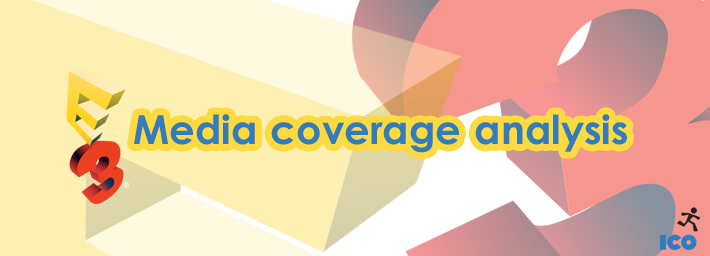
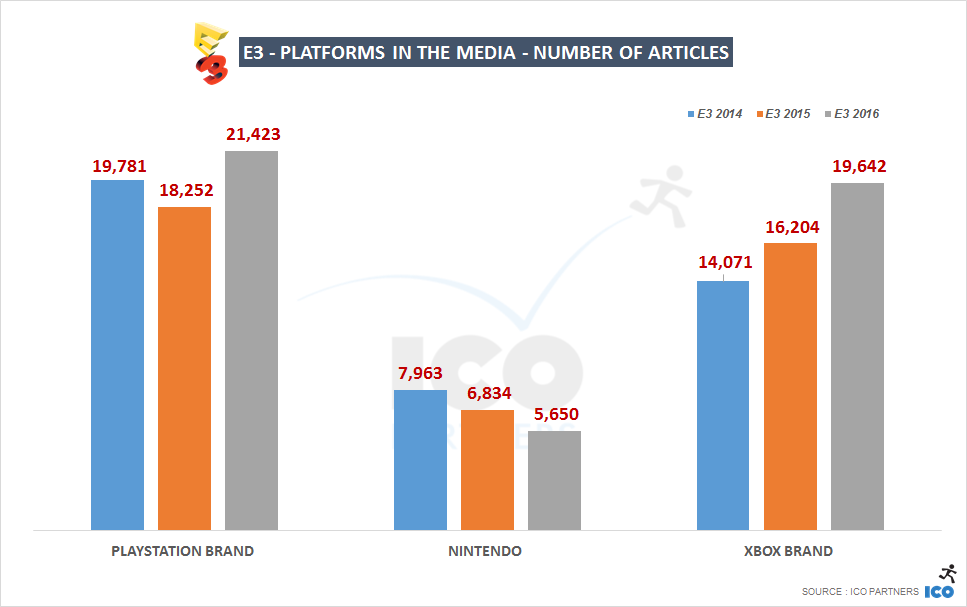

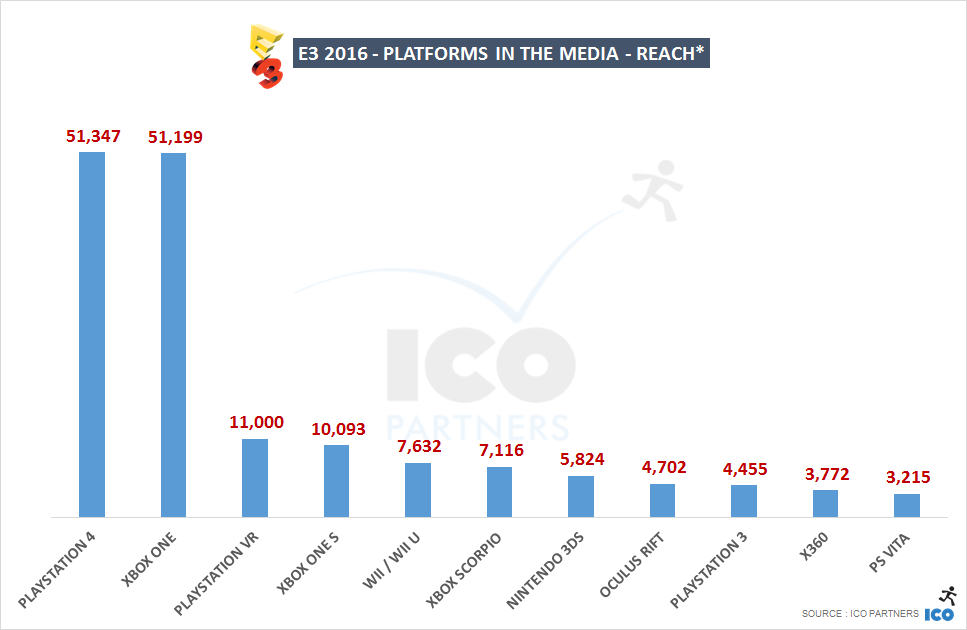
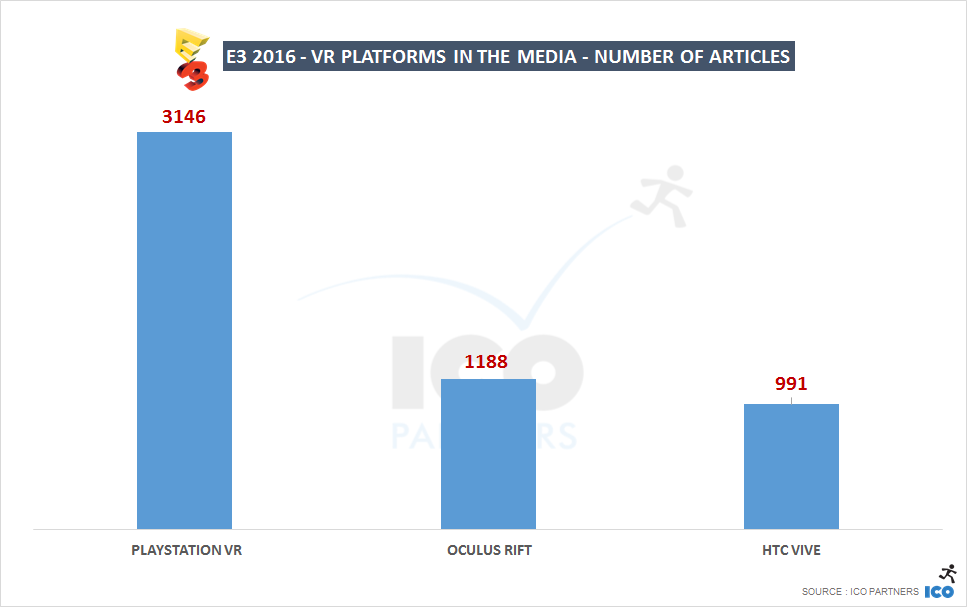
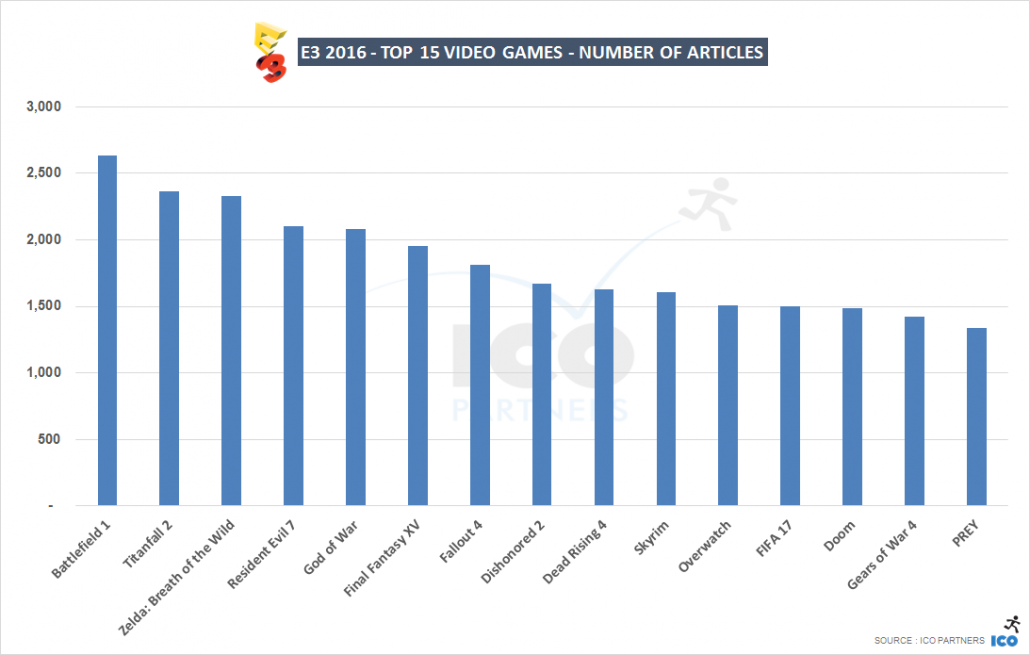

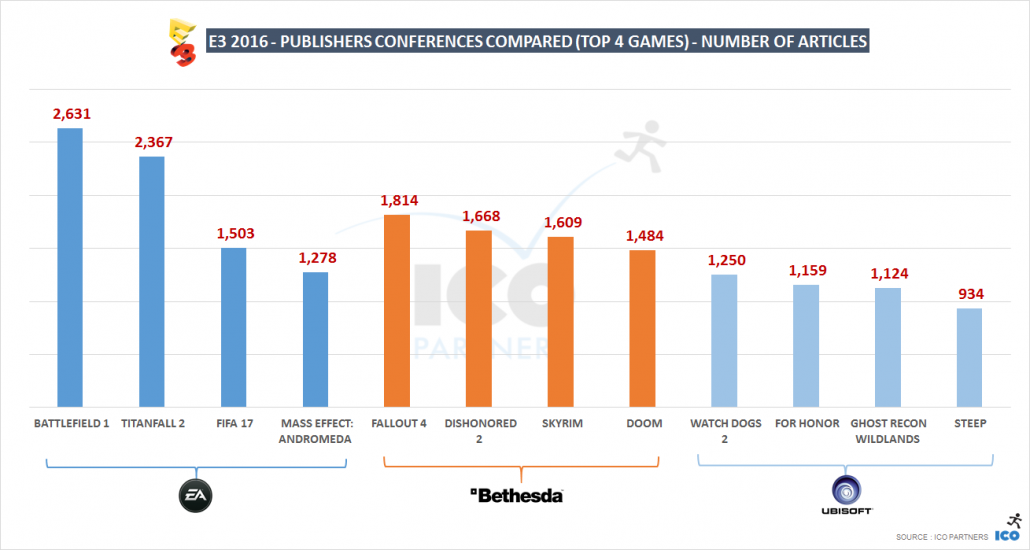
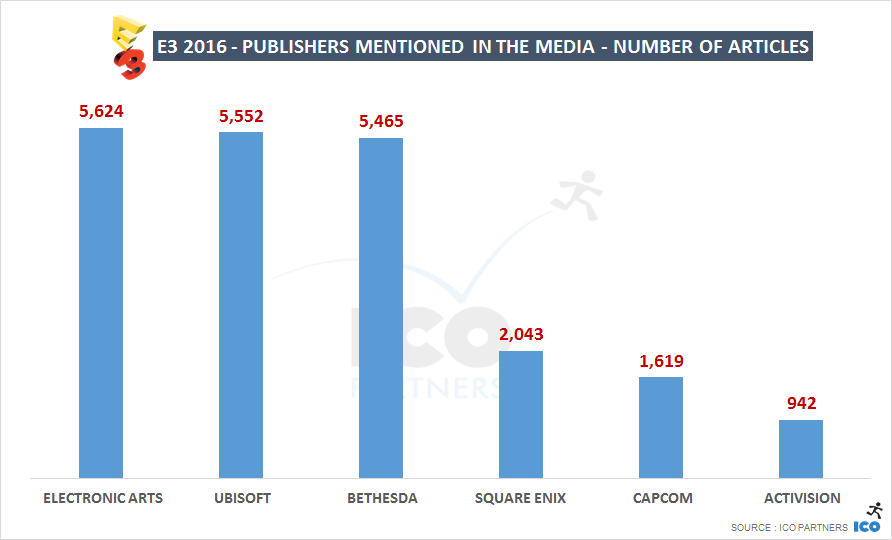
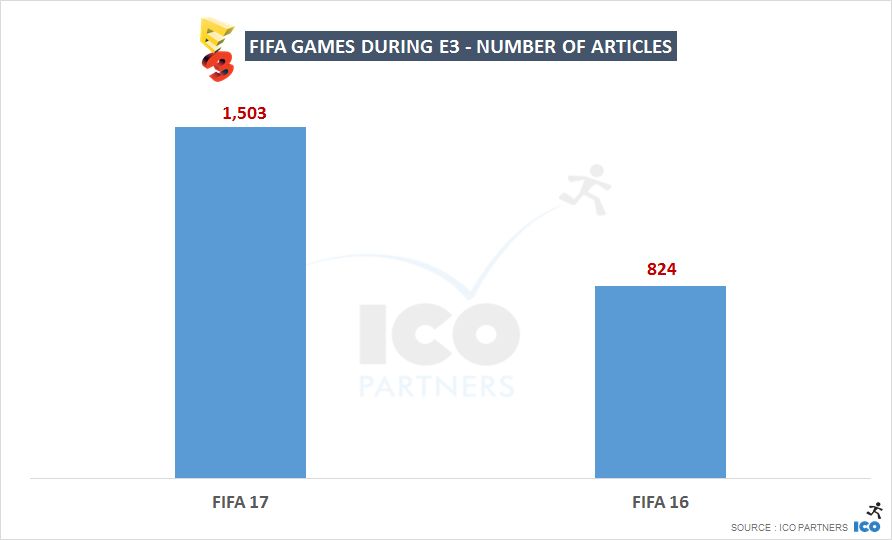
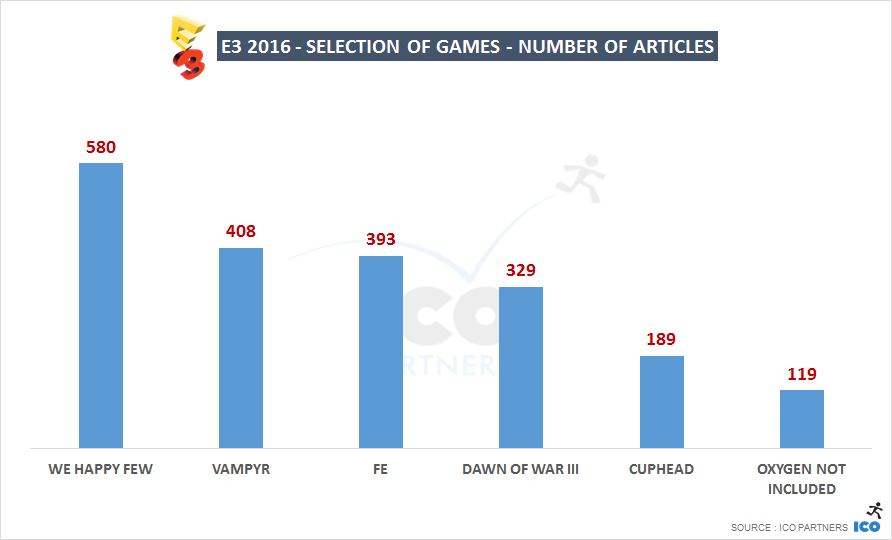
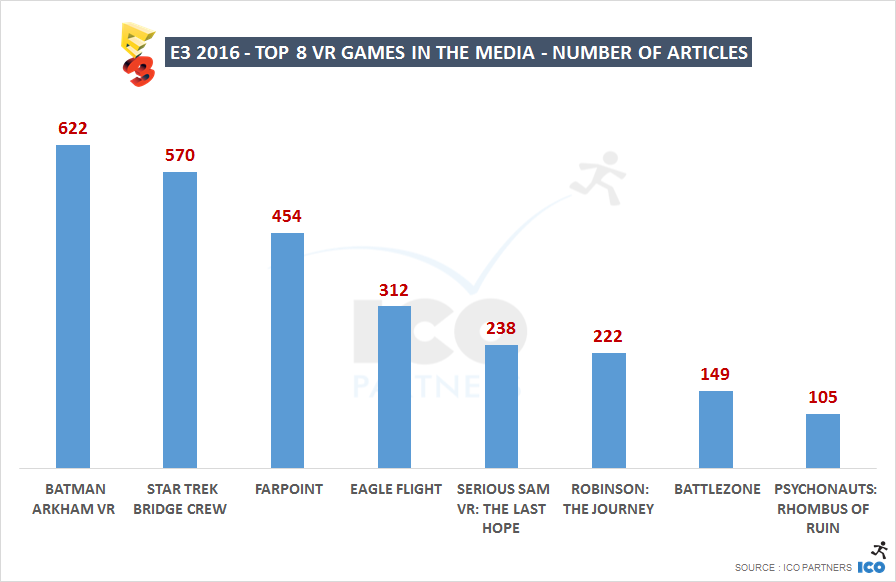
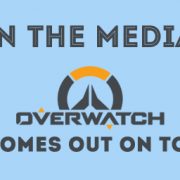
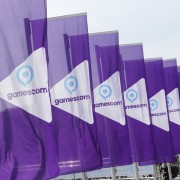
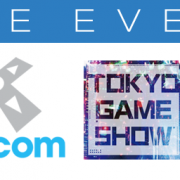
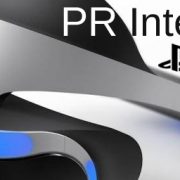
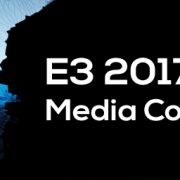


Trackbacks & Pingbacks
[…] It’s that time of year again: the week after E3, and time for me to go over the numbers and media coverage from the show, as per tradition. If this the first time for you, please fee free to have a look at the methodology used, and read the blog posts for 2015 and 2016. […]
[…] up on the blog post looking at the media coverage of E3 and gamescom, I wanted to do one on the “September Events”. The month was rich in games […]
Leave a Reply
Want to join the discussion?Feel free to contribute!